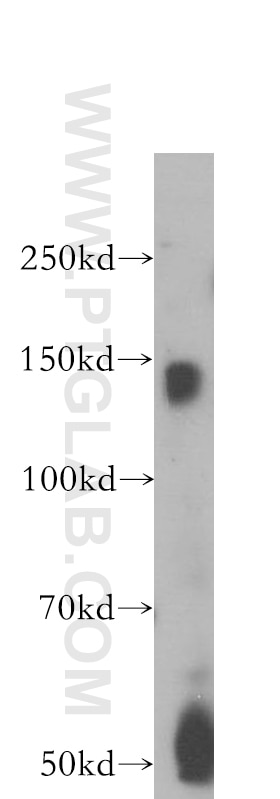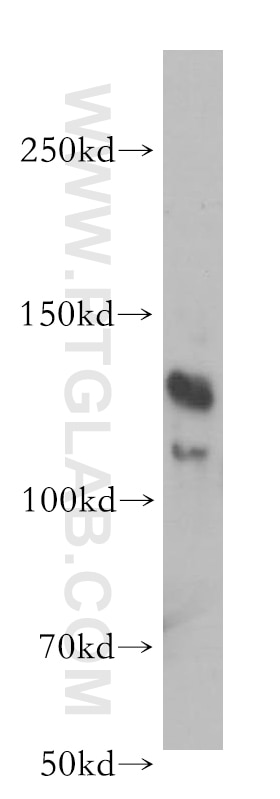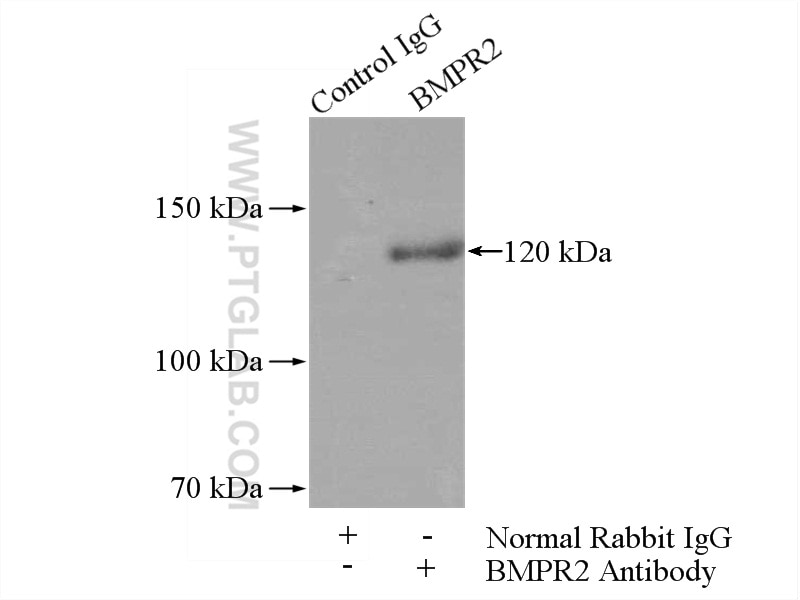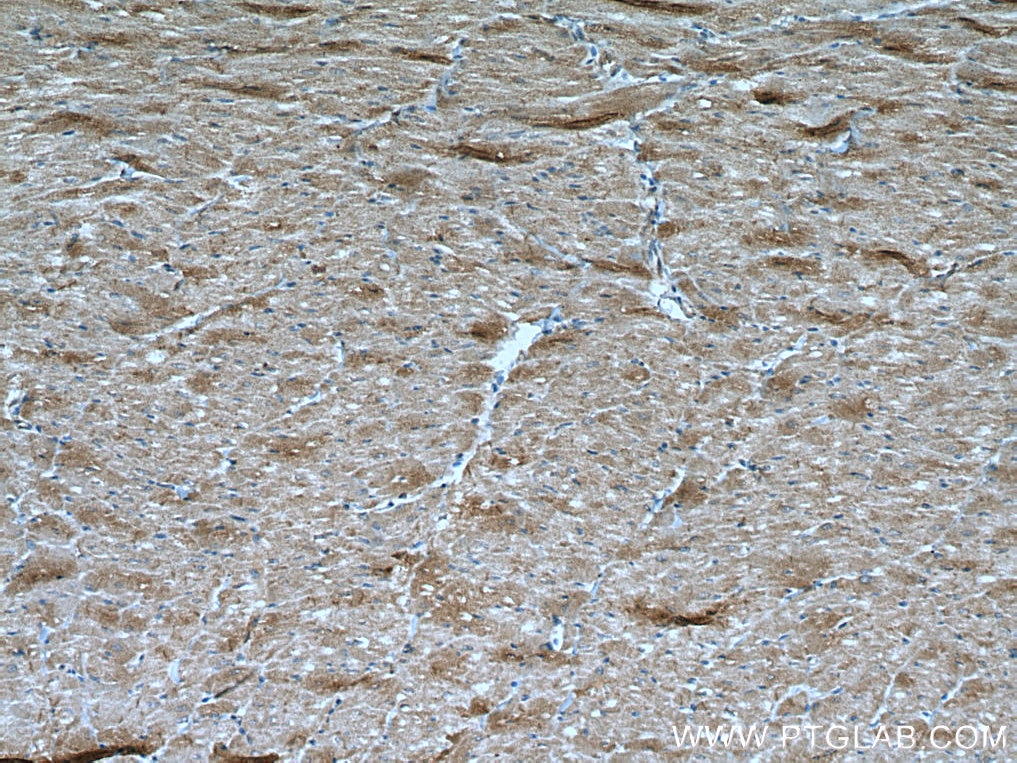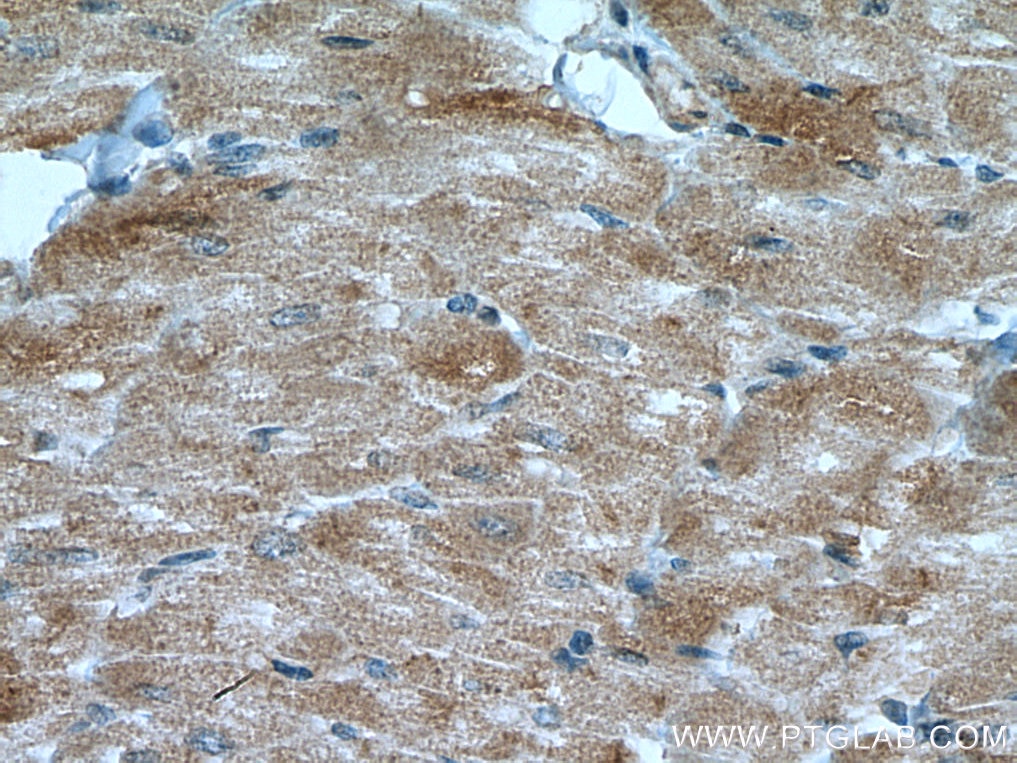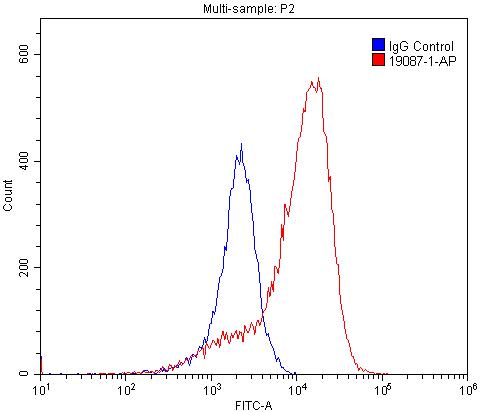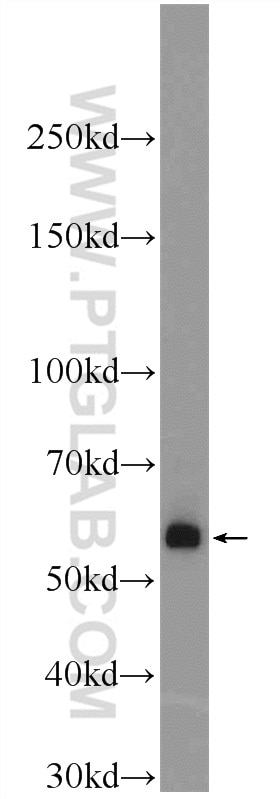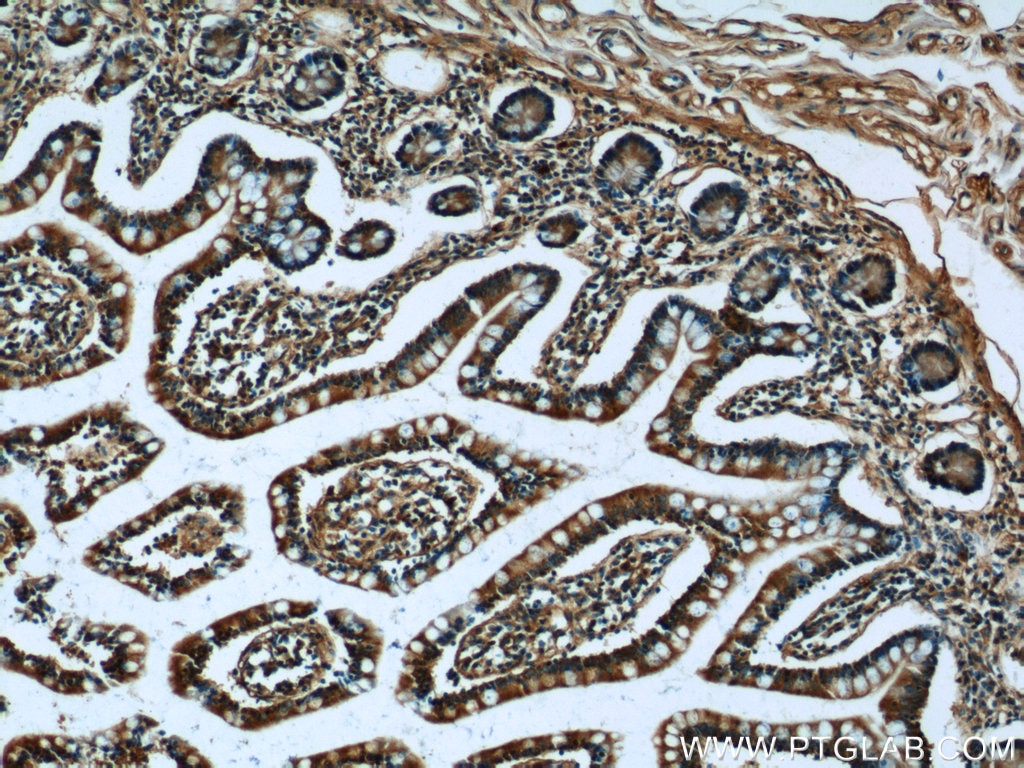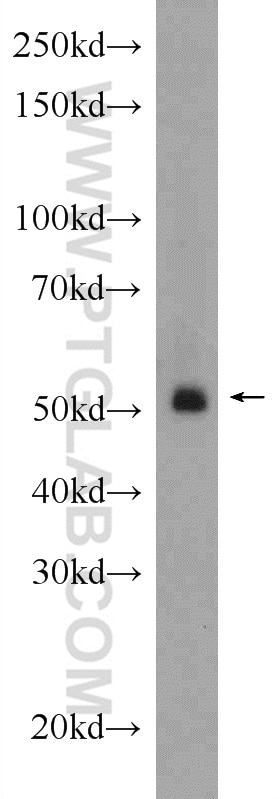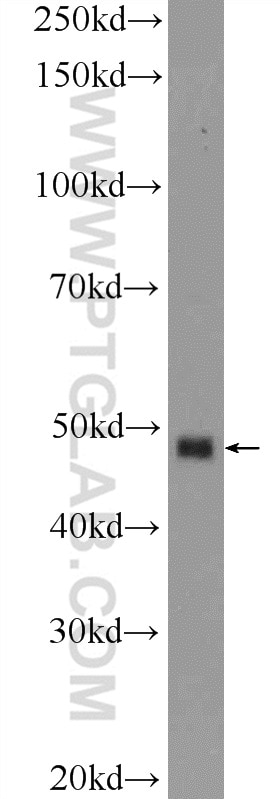- Featured Product
- KD/KO Validated
BMPR2 Polyklonaler Antikörper
BMPR2 Polyklonal Antikörper für FC, IHC, IP, WB,ELISA
Wirt / Isotyp
Kaninchen / IgG
Getestete Reaktivität
human, Maus, Ratte
Anwendung
WB, IP, IHC, IF, FC, ELISA
Konjugation
Unkonjugiert
Kat-Nr. : 19087-1-AP
Synonyme
Galerie der Validierungsdaten
Geprüfte Anwendungen
| Erfolgreiche Detektion in WB | humanes Herzgewebe, Maushirngewebe |
| Erfolgreiche IP | Maushirngewebe |
| Erfolgreiche Detektion in IHC | humanes Herzgewebe Hinweis: Antigendemaskierung mit TE-Puffer pH 9,0 empfohlen. (*) Wahlweise kann die Antigendemaskierung auch mit Citratpuffer pH 6,0 erfolgen. |
| Erfolgreiche Detektion in FC | PC-3-Zellen |
Empfohlene Verdünnung
| Anwendung | Verdünnung |
|---|---|
| Western Blot (WB) | WB : 1:1000-1:6000 |
| Immunpräzipitation (IP) | IP : 0.5-4.0 ug for 1.0-3.0 mg of total protein lysate |
| Immunhistochemie (IHC) | IHC : 1:50-1:500 |
| Durchflusszytometrie (FC) | FC : 0.20 ug per 10^6 cells in a 100 µl suspension |
| It is recommended that this reagent should be titrated in each testing system to obtain optimal results. | |
| Sample-dependent, check data in validation data gallery | |
Veröffentlichte Anwendungen
| KD/KO | See 1 publications below |
| WB | See 4 publications below |
| IF | See 1 publications below |
Produktinformation
19087-1-AP bindet in WB, IP, IHC, IF, FC, ELISA BMPR2 und zeigt Reaktivität mit human, Maus, Ratten
| Getestete Reaktivität | human, Maus, Ratte |
| In Publikationen genannte Reaktivität | human, Maus, Ratte |
| Wirt / Isotyp | Kaninchen / IgG |
| Klonalität | Polyklonal |
| Typ | Antikörper |
| Immunogen | BMPR2 fusion protein Ag5868 |
| Vollständiger Name | bone morphogenetic protein receptor, type II (serine/threonine kinase) |
| Berechnetes Molekulargewicht | 115 kDa |
| Beobachtetes Molekulargewicht | 120 kDa |
| GenBank-Zugangsnummer | BC052985 |
| Gene symbol | BMPR2 |
| Gene ID (NCBI) | 659 |
| Konjugation | Unkonjugiert |
| Form | Liquid |
| Reinigungsmethode | Antigen-Affinitätsreinigung |
| Lagerungspuffer | PBS mit 0.02% Natriumazid und 50% Glycerin pH 7.3. |
| Lagerungsbedingungen | Bei -20°C lagern. Nach dem Versand ein Jahr lang stabil Aliquotieren ist bei -20oC Lagerung nicht notwendig. 20ul Größen enthalten 0,1% BSA. |
Hintergrundinformationen
BMPs (bone morphogenetic protein) are involved in endochondral bone formation and embryogenesis. BMPR2 encodes a member of the (BMP) receptor family of transmembrane serine/threonine kinases. It is a widely expressed receptor, with high mRNA expression during development in many tissues. Dimer of BMPR2 receptors (70-80 kD) forms a complex with a dimer of type I BMPR1(50-55 kD) in signal transduction. This antibody recognizes endogenous levels of total BMPR2 protein, including 115 kD precursor, 75 kD mature form and 150 kD dimer.
Protokolle
| Produktspezifische Protokolle | |
|---|---|
| WB protocol for BMPR2 antibody 19087-1-AP | Protokoll herunterladen |
| IHC protocol for BMPR2 antibody 19087-1-AP | Protokoll herunterladen |
| IP protocol for BMPR2 antibody 19087-1-AP | Protokoll herunterladen |
| FC protocol for BMPR2 antibody 19087-1-AP | Protokoll herunterladen |
| Standard-Protokolle | |
|---|---|
| Klicken Sie hier, um unsere Standardprotokolle anzuzeigen |
Publikationen
| Species | Application | Title |
|---|---|---|
Basic Res Cardiol The miR-182/Myadm axis regulates hypoxia-induced pulmonary hypertension by balancing the BMP- and TGF-β-signalling pathways in an SMC/EC-crosstalk-associated manner | ||
J Cell Biol A PINCH-1-Smurf1 signaling axis mediates mechano-regulation of BMPR2 and stem cell differentiation. | ||
Sci Signal Augmented noncanonical BMP type II receptor signaling mediates the synaptic abnormality of fragile X syndrome. | ||
Am J Physiol Lung Cell Mol Physiol Transforming growth factor-β plays divergent roles in modulating vascular remodeling, inflammation, and pulmonary fibrosis in a murine model of scleroderma | ||
Commun Biol Bone morphogenetic protein signaling is required for RAD51-mediated maintenance of genome integrity in vascular endothelial cells.
| ||
Sci Rep GATA6 coordinates cross-talk between BMP10 and oxidative stress axis in pulmonary arterial hypertension |
